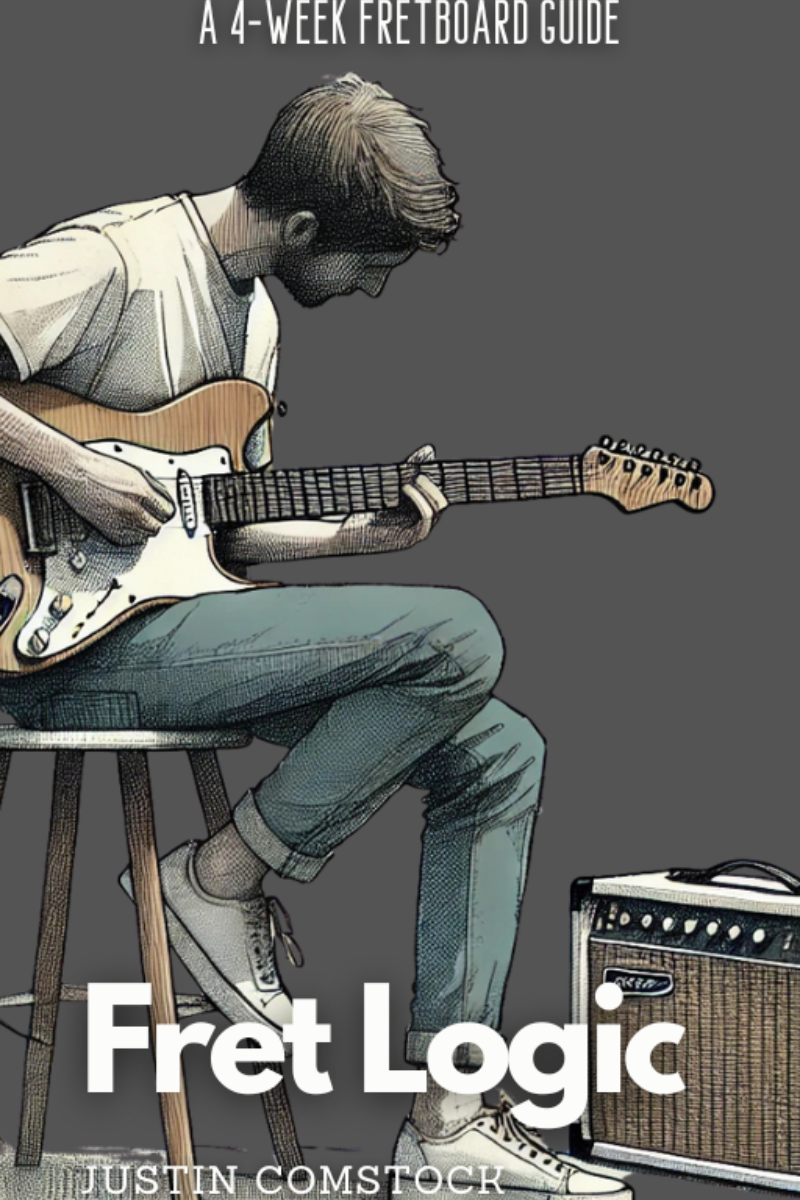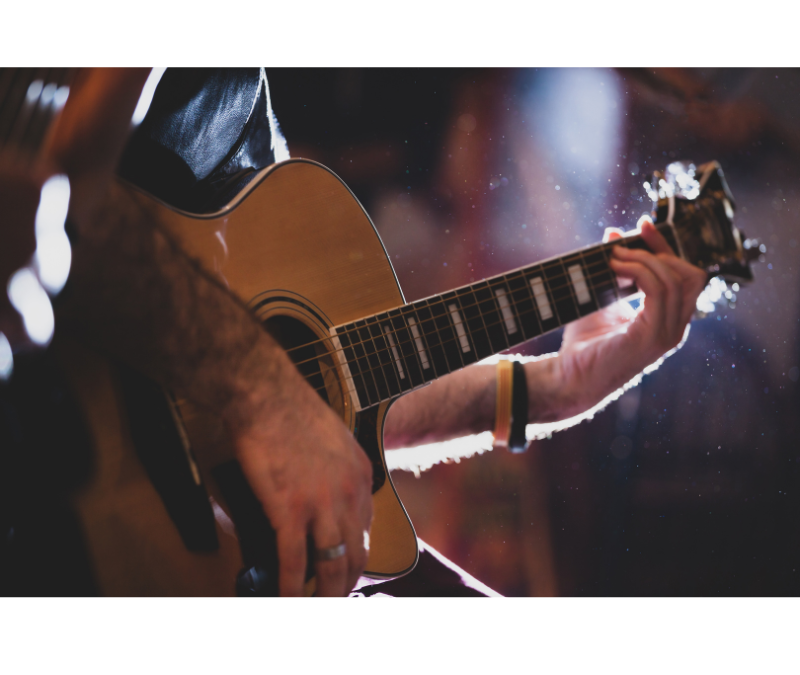“You don’t need 100 chords or a closet full of gear. You need the right framework—and the right first steps.”
Starting your journey with beginning guitar lessons can feel overwhelming. Barre chords buzz. Fingers cramp. Your pick disappears for the third time this week.
But what if you could actually enjoy learning the guitar—and build real skills faster than you imagined?
This guide breaks down the two most essential elements of beginner guitar: open chords and pentatonic scales. Add a few iconic rock songs, some smart practice strategies, and you’ve got a beginner playbook that actually works.
✅ Bonus: Want to shortcut your learning curve?
Grab my FretDeck™ Kickstarter and join our Discord community at Guitar Freaks Hangout. You’ll get access to our beginner course Chord Secrets, jam prompts, and feedback from real players.

❌ Stop Guessing. Start Shredding.
If you’re still fumbling through scale patterns and box shapes… it’s costing you progress.
FretDeck™ is the no-fluff system that shows you exactly how to master the fretboard—fast. Early access.
⚡️ This isn’t for dabblers. It’s for players who want results.
👉 Click here to join the pre-launch now
Early access. Limited rewards. Don’t wait.
Step One: Learn Open Guitar Chords
Open chords are the gateway to real music. They’re called “open” because they let the strings ring freely—and they show up in hundreds of songs.
Here’s your short list of must-know chords for any beginner:
🎸 E Minor (Em)
Easy to play, perfect for moody songs.
Fingers: Middle (2nd fret, 5th string), Ring (2nd fret, 4th string)
🎸 A Minor (Am)
Melancholic and beautiful.
Fingers: Index (1st fret, 2nd string), Middle (2nd fret, 4th), Ring (2nd fret, 3rd)
🎸 C Major (C)
Bright and uplifting.
Fingers: Index (1st fret, 2nd), Middle (2nd fret, 4th), Ring (3rd fret, 5th)
🎸 G Major (G)
The most universal chord in rock.
Fingers: Middle (3rd fret, 6th), Index (2nd fret, 5th), Ring (3rd fret, 2nd), Pinky (3rd fret, 1st)
🎸 D Major (D)
A must-know for countless hits.
Fingers: Index (2nd fret, 3rd), Middle (2nd fret, 1st), Ring (3rd fret, 2nd)
🎸 E Major (E)
Full, resonant, and perfect for blues.
Fingers: Index (1st fret, 3rd), Middle (2nd fret, 5th), Ring (2nd fret, 4th)
👉 Want chord charts and 12 essential chord progressions?
Download the Chord Secrets course inside FretDeck™.
Step Two: Master Your First Scale – The Pentatonic
If chords are the foundation, pentatonic scales are your voice.
The A minor pentatonic is where many legends—B.B. King, Slash, Hendrix—began.
e|------------------------5–8–
B|--------------------5–8-----
G|----------------5–7---------
D|------------5–7-------------
A|--------5–7-----------------
E|----5–8---------------------
Practice Plan:
- Start slow. Play one note at a time.
- Use a metronome. (Set it to 60–70 bpm to start.)
- Create mini riffs using just 3 or 4 notes.
- Combine chords + scales. Play an A minor chord, then noodle with the A minor pentatonic.
This is how real music gets made—by combining rhythm and lead.
Step Three: Easy Rock Songs That Use Chords You Know
Apply what you’re learning right away. These classic songs are perfect for beginning guitar lessons:
| Song | Chords |
|---|---|
| Horse with No Name – America | Em, D6add9/F# |
| Knockin’ on Heaven’s Door – Dylan | G, D, Am, C |
| Sweet Home Alabama – Skynyrd | D, C, G |
| Love Me Do – The Beatles | G, C, D |
| For What It’s Worth – Buffalo Springfield | E, A |
| Zombie – The Cranberries | Em, Cmaj7, G6, D/F# |
| Free Fallin’ – Tom Petty | D, G, A |
| Wish You Were Here – Pink Floyd | G, C, D, Am |
Play the chords, then try improvising using the corresponding pentatonic scale (e.g., Em for Wish You Were Here).
Practice Like You Mean It
Most people don’t need more YouTube tabs.
They need a framework and daily discipline. Here’s how:
🔁 1. Daily 10-Minute Warmup
Strum 3 open chords. Then play the A minor pentatonic slowly.
🎵 2. Record Yourself
Track progress. Even bad takes show where you’re improving.
🧠 3. Play AND Think
Ask: “What scale fits this chord?”
That’s fretboard awareness.
⏰ 4. Use a Timer
15 minutes of focused work beats an hour of distracted noodling.
🎯 5. Join a Guitar Community
Ask questions. Share wins. Get inspired.
👉 Join our Discord: Guitar Freaks Hangout
Bonus Offer: Unlock the Fretboard With FretDeck™
🎯 FretDeck™ is your shortcut to fretboard fluency.
If you’re struggling to understand where to play scales and how they connect to your chords, the FretDeck™ Kickstarter is for you.
Each card in the deck teaches you:
- A pentatonic scale pattern in one of 60 positions
- How to connect scales to chords
- How to use modes within the pentatonic system
🎁 Plus, when you back the campaign, you get:
- Immediate access to the Chord Secrets digital course
- Entry into our private Discord
- Bonus video lessons + jam prompts

❌ Stop Guessing. Start Shredding.
If you’re still fumbling through scale patterns and box shapes… it’s costing you progress.
FretDeck™ is the no-fluff system that shows you exactly how to master the fretboard—fast. Early access.
⚡️ This isn’t for dabblers. It’s for players who want results.
👉 Click here to join the pre-launch now
Early access. Limited rewards. Don’t wait.
Final Thoughts: Begin With Confidence
Beginning guitar lessons don’t have to be confusing or chaotic.
Start with open chords. Add the A minor pentatonic.
Practice with purpose. Play real songs.
And if you want a companion to keep you focused, back the FretDeck™ campaign and join our community.
This isn’t just about learning guitar. It’s about becoming the kind of player who never stops growing.

Join Guitar Freaks Hangout on Discord! 🎸
Get Fret Logic FREE!
Join the Guitar Freaks Hangout Discord and get exclusive access to my entire e-book, Fret Logic! Master the fretboard and elevate your solos with this comprehensive guide.
👉 Don’t miss out—join now and download your free copy!
🚀 Take Action:
✅ Back the FretDeck Kickstarter
✅ Join Guitar Freaks Hangout Discord
✅ Download Chord Secrets Course










